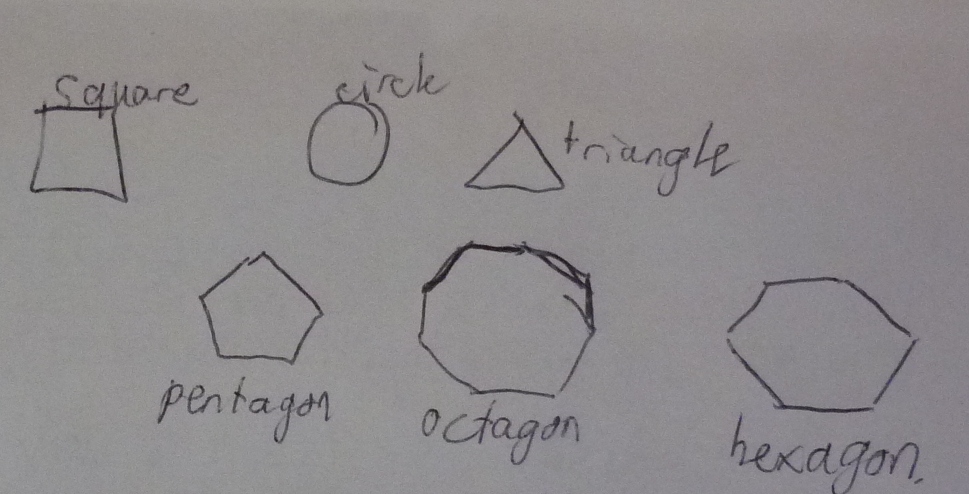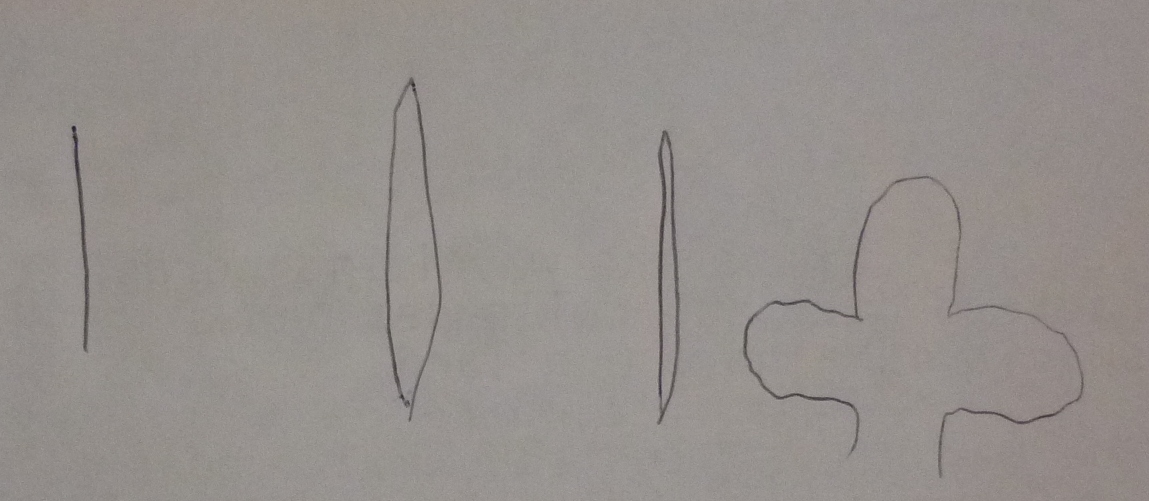This page has been written for preparing for a field study into the shape of leaves – Shape Sleuths 1. (Changes to this needed for water creatures is not yet done.)
Preparations
These should be done at least a day before you will go out to the field. This may take about an hour. All ages can be involved in each part. There are three parts:
- review what you know already – this may take 10 mins.
- guess what you will find ( i.e. make a hunch, or hypothesize) – this may take 5 mins.
- plan your field study so it will be safe and ‘stay on track’, i.e. get information about what you went there for! This may take 3/4 hour or more, depending on what you need to do.
1 What do you already know?
Each person will need two sheets of blank paper, to record what you know already – i.e. do not research!
Sheet 1 
Allow 1 minute to draw all the key shapes you know. Allow another minute to write names against any of these shapes you know
Allow 1 min to draw all the shapes of leaves that you know. Allow another minute to write the names against any of these shapes that you know.
Share these with each other. Discuss what was the most commonly known shapes, and learn from each other about names, but do no other research yet.
2 What do you expect to find?
This is where you make an educated guess – a hunch, a hypothesize – about what you expect to find based on the knowledge you currently have.
What leaf shapes are there at this place?
This should be done individually and as written statement or this shape hunch diagram , so you can see how you went later on:
Hyp 1 What leaf shapes?
Hyp 2 What is most common?
(You may like to share your hyps with those who are working with you to see if they have the same expectations. If not, you may like to talk about what lies behind different expectations. An example of hunches formed at Warracknabeal is here )
The guesses,huches or hypotheses lead to the focus of the field study – what data are you going out to collect?
Plan the field study
There are two parts to this – collection of data and safety at the site.
Consider Safety first – especially where and when
location issues– how to travel there, parking issues, map needed? water hazards, slope, ground, fire safety or flood warnings, etc etc,
health issues – time of day to avoid heat and UV at max, ‘sensible’ clothing including footwear, potential for snakes, bees, etc, first aid kits, asthma or other personal preventatives, etc etc
What if it rains etc on the chosen day? Do you have a backup day?
Data collection next – How will you record the leaf shapes and how many there are of each?
Photo (especially if in a National, State or other park where samples are not allowed to be taken).
If samples, how big, what will you need to carry with you?
Is it easier to trace or draw outline shapes, so as not to be distracted by size or colour? What pens/pencils/textas and paper will you need for that?
How will you keep a tally of plants with each shape? paper and pen, mobile notemaker?
What equipment will you need?
Suggested field equipment needed per person – paper, a hard board to write on (eg clipboard), pencils and/or textas and/or biros, plastic bag, camera
and Safety equipment – Sunhat, sunscreen, seat or rug to sit on, suitable footwear, water bottle, snack, first aid kit, map.\
Check are you ready to go? Know what you are looking for, from where and when, and have the equipment to do this safely?
Then off you go, and enjoy investigating living things for this field study! and making the most of being out in Planet Earth!
Return to main Shape Sleuths for the next stage after the field trip.
or go to the Warracknabeal Shape Sleuths 1 – leaves here
This page is still under construction
Page updated 20 Feb 2013
Supporter of
 and
and 

